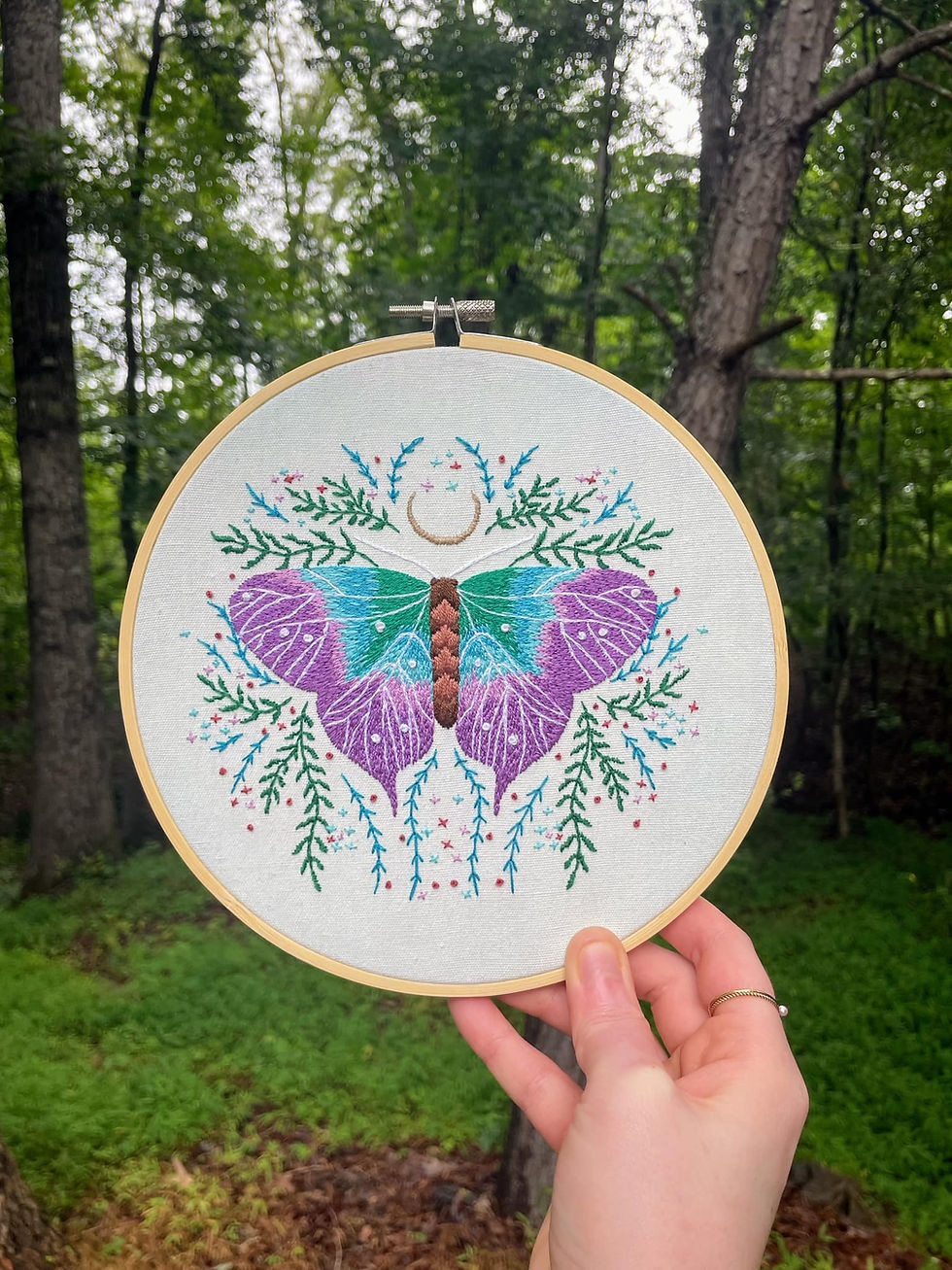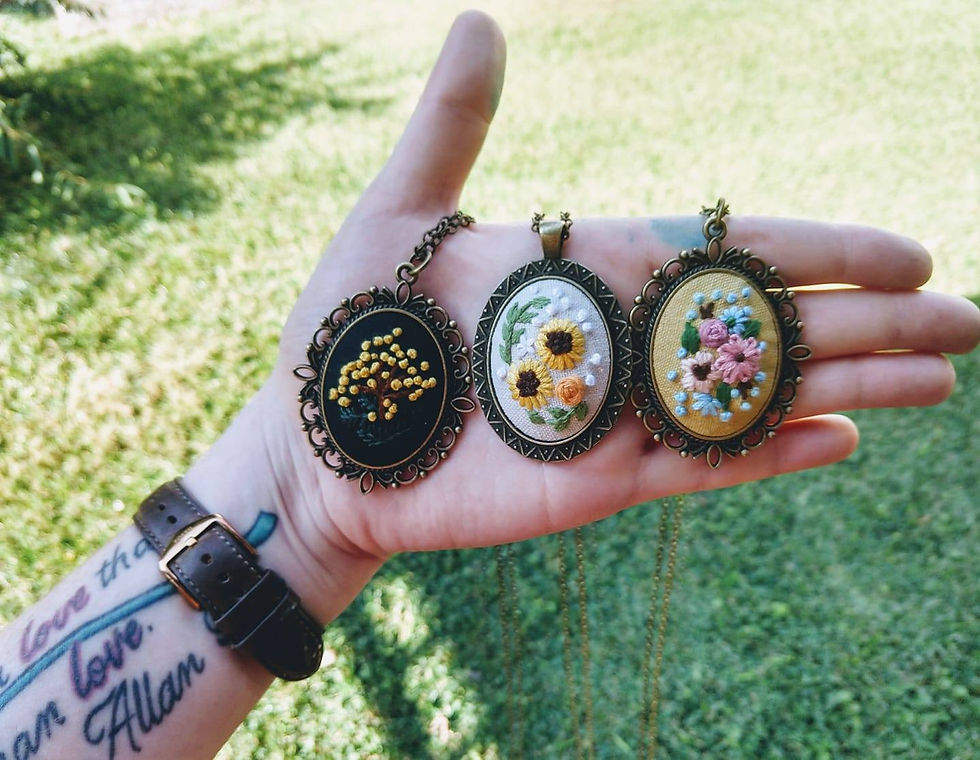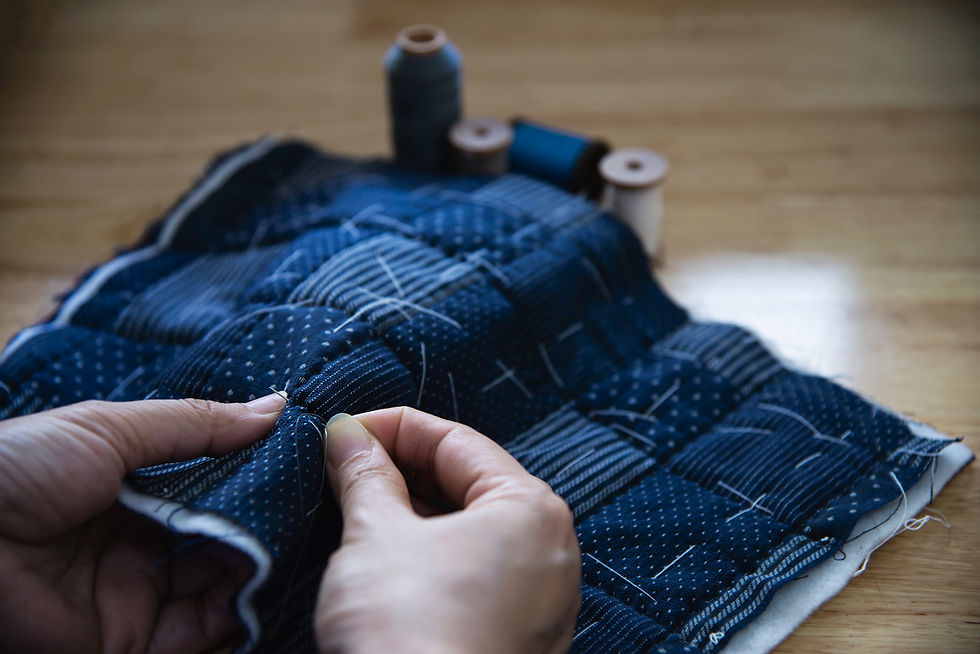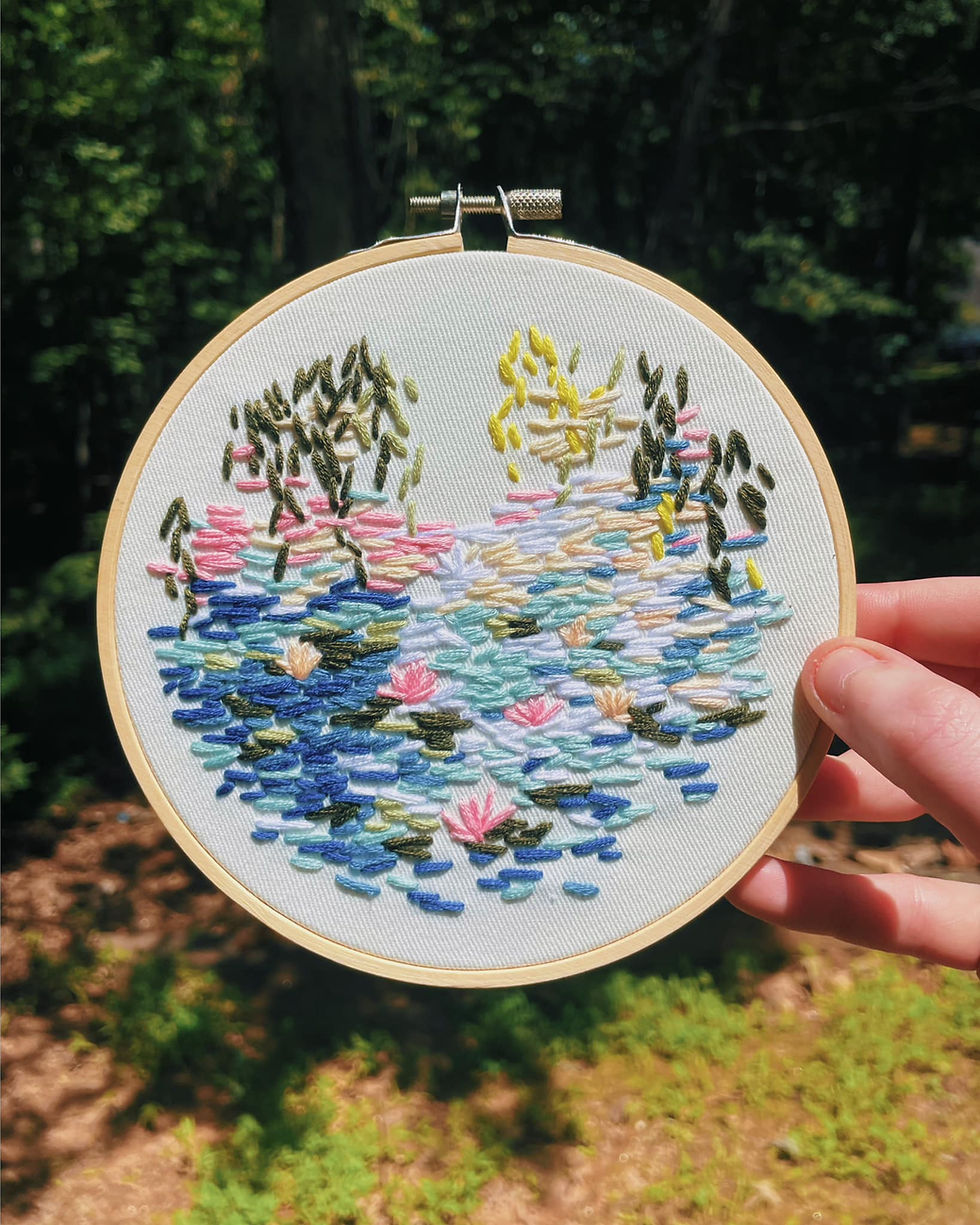What Is Slow Stitching?
- Esther Steele

- Aug 23, 2023
- 4 min read
Updated: Aug 25, 2023

Slow stitch is a traditional form of hand sewing that emphasizes the beauty and quality of the technique. It involves using a needle and thread to create intricate and detailed designs on fabric, often focusing on texture and dimensionality. Slow stitching is a mindful and meditative practice that encourages appreciating the sewing process and the materials used. It is a way to connect with the past and preserve the art of sewing for future generations. Slow stitch has a rich history that dates back centuries. It was traditionally used by women in many cultures as a way to create functional and decorative items for their homes and families. The technique was often passed down from generation to generation, with each family adding their unique style and flair to the designs. In recent years, slow stitch has experienced a resurgence in popularity as more people seek out ways to connect with their creativity and find calm in a busy world.
Slow Stitch History

Slow stitch has a rich history that dates back centuries. It was traditionally used by women in many cultures as a way to create functional and decorative items for their homes and families. The technique was often passed down from generation to generation, with each family adding their unique style and flair to the designs. In recent years, slow stitch has experienced a resurgence in popularity as more people seek out ways to connect with their creativity and find calm in a busy world.
Different Types of Names For Slow Stitching
Yes, there are many different types of slow stitches. Some popular forms include Embroidery, Sashiko, Boro, and Kantha. Each style has its unique history and techniques, but they all share the common thread of being created through a slow and mindful approach to stitching. Whether you are a beginner or an experienced crafter, a type of slow stitch can help you tap into your creativity and find a sense of calm and connection.
Embroidery

Embroidery is a decorative art form that involves stitching designs onto fabric using needles, thread, or yarn. It is an ancient technique that has been used for centuries worldwide to embellish clothing, household textiles, and accessories. Embroidery can be done by hand or machine, and many different stitches and styles can be used to create intricate patterns and designs. Some common embroidery techniques include cross-stitch, satin stitch, chain stitch, and crewel embroidery. Embroidery can be used to add personal touches to clothing, create unique gifts, or simply as a relaxing hobby.
Sashiko

Sashiko is a form of decorative reinforcement stitching that originated in Japan. Traditionally, it was used to reinforce and repair garments and add decorative elements to clothing and household items. The stitching technique involves creating a series of small, even stitches in a pattern or design using a needle and thread. Sashiko has become more popular in recent years as a form of embroidery and a way to add unique, handmade touches to clothing and accessories.
Sashiko is a traditional Japanese embroidery technique that is often used in conjunction with boro textiles. It typically involves stitching geometric patterns onto a piece of fabric using a running stitch. Common patterns in sashiko include interlocking circles, squares, and diamonds, and more organic shapes inspired by nature, such as waves and clouds. The stitches themselves often form a pattern, with rows of evenly spaced stitches creating a textured and visually pleasing effect. Sashiko is also often used to reinforce and repair boro textiles, as the strong stitching can help hold together pieces of fabric that have been patched and mended over time.
Boro

Boro textiles are often considered folk art due to their unique aesthetic and cultural significance. The term "boro" refers to a type of fabric that has been repeatedly patched and repaired over time, resulting in a distinctive layered look. Boro textiles were traditionally made by impoverished Japanese farmers in the 19th and early 20th centuries who could not afford to buy new fabric. Instead, they would patch together old fabric scraps to create sturdy and functional textiles. Today, boro textiles are highly prized for their historical significance and artistic value. They are often seen as a symbol of Japanese culture and craftsmanship and are collected by art enthusiasts worldwide.
Kantha
Kantha is a type of embroidery that originates from the Indian subcontinent. It involves stitching together old saris or dhotis layers to create a new, colorful textile. Like boro textiles, kantha has historical significance and is considered a form of folk art. It's often used to make blankets, bedspreads, and other household items. Many artisans still practice this traditional craft today, and the finished products are highly prized for their beauty and unique style.
Tools
When it comes to slow stitching, there are a few tools that you'll want to have on hand. First and foremost, you'll need a needle and thread. Depending on the project you're working on, you may want to choose a specific type of needle and thread that best suits your needs. You may also want to have a thimble to protect your fingers as you stitch. Additionally, a hoop or frame can be helpful to keep your fabric taut and prevent it from shifting as you work. Finally, a pair of small scissors or snips will come in handy for trimming thread and cutting fabric as needed. With these tools, you'll be well on your way to creating beautiful slow-stitch projects.
Fabric
To slow stitch, you can use a variety of fabrics, such as cotton, linen, wool, or silk. It ultimately depends on the project you're working on and the look you're trying to achieve. Make sure to choose a fabric that is suitable for the type of needle and thread you plan to use.

If you want to see slow stitching in real-time, with instructions and more, check out my YouTube. Video. "Slow Stitch Journal Topper"
Here is a list of my favorite slow stitch tools.
Kantha Fabric Snippets: https://www.etsy.com/listing/1045349474/kantha-fabric-snippet-pack-kantha-scrap?click_key=aa5d63f90350c002547db9c4bbb6570d47cb4828%3A1045349474&click_sum=7408ad21&ref=shop_home_recs_1&sts=1
Amazon links for products in the video:
Thread: Sulky: https://amzn.to/45x84gW
Sashiko Thread: https://amzn.to/45GDJN2
Tulip Sashiko Needles: https://amzn.to/3YJoAIB
.png)








Comments